
The Timeless Beauty of Hortobagy National Park
Discover the timeless beauty of Hortobagy National Park, Hungary's largest grassland and a UNESCO World Heritage Site, known for its rich wildlife and cultural heritage.
Hortobagy National Park, located in Hungary, is a mesmerizing expanse of natural wonder. It is the largest continuous natural grassland in Europe and a UNESCO World Heritage Site. The park is renowned for its sweeping plains, rich wildlife, and cultural heritage. Visitors can witness the traditional pastoral life that has been preserved for centuries, along with the unique flora and fauna that thrive in this untouched environment. One of the park's highlights is the annual migration of birds. Hortobagy is a crucial stopover for thousands of migratory birds, making it a paradise for bird watchers. The vast wetlands and meadows are home to rare species such as the great bustard and the red-footed falcon. The park also has traditional Hungarian herdsmen, known as csikós, who demonstrate their age-old skills in animal husbandry and horse riding. Their performances, featuring the famous Puszta Five, are a must-see. Visitors to Hortobagy National Park can enjoy a variety of activities, including guided tours, horse riding, and boat trips. The park's visitor center provides insightful exhibits about the area's natural and cultural history. Whether you're an avid nature lover or simply looking for a peaceful escape, Hortobagy National Park offers a unique and enriching experience.
Local tips in Hortobagy National Park
- Visit during spring or autumn for the best bird-watching opportunities.
- Wear comfortable walking shoes and bring binoculars for spotting wildlife.
- Check the schedule for traditional herdsmen performances to witness the Puszta Five.
- Pack a picnic and enjoy a meal amidst the serene landscape.
- Consider hiring a local guide to enhance your understanding of the park's history and biodiversity.
The Timeless Beauty of Hortobagy National Park
Hortobagy National Park, located in Hungary, is a mesmerizing expanse of natural wonder. It is the largest continuous natural grassland in Europe and a UNESCO World Heritage Site. The park is renowned for its sweeping plains, rich wildlife, and cultural heritage. Visitors can witness the traditional pastoral life that has been preserved for centuries, along with the unique flora and fauna that thrive in this untouched environment. One of the park's highlights is the annual migration of birds. Hortobagy is a crucial stopover for thousands of migratory birds, making it a paradise for bird watchers. The vast wetlands and meadows are home to rare species such as the great bustard and the red-footed falcon. The park also has traditional Hungarian herdsmen, known as csikós, who demonstrate their age-old skills in animal husbandry and horse riding. Their performances, featuring the famous Puszta Five, are a must-see. Visitors to Hortobagy National Park can enjoy a variety of activities, including guided tours, horse riding, and boat trips. The park's visitor center provides insightful exhibits about the area's natural and cultural history. Whether you're an avid nature lover or simply looking for a peaceful escape, Hortobagy National Park offers a unique and enriching experience.
When is the best time to go to Hortobagy National Park?
Iconic landmarks you can’t miss
Nine-Hole Bridge
Discover the Nine-Hole Bridge in Hortobágy: A stunning architectural gem and a serene escape into Hungary's picturesque countryside.

Hortobágyi National Park
Explore the breathtaking landscapes and rich wildlife of Hortobágyi National Park, Hungary's largest national park and a UNESCO World Heritage site.
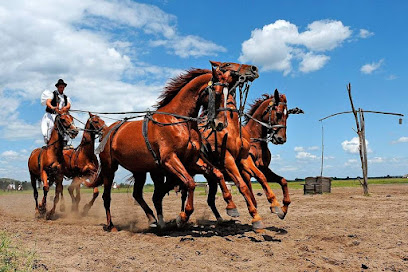
Hortobágy Wild Animal Park
Explore the enchanting Hortobágy Wild Animal Park, a haven for wildlife lovers in Hungary, featuring native species and stunning natural landscapes.
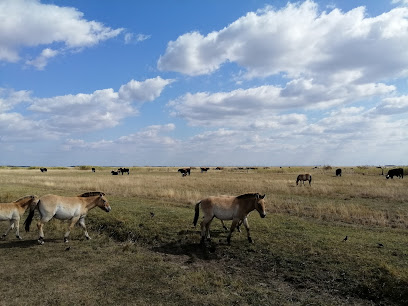
Hortobágyi tank battle memorial
Explore the Hortobágyi Tank Battle Memorial, a serene tribute to bravery set against the stunning backdrop of Hungary's national park.
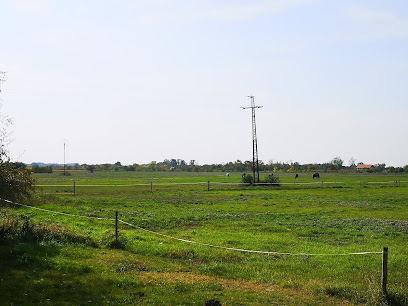
Unmissable attractions to see
Hortobágyi tank battle memorial
Discover the Hortobágyi Tank Battle Memorial, a serene homage to bravery amidst Hungary's breathtaking landscapes, perfect for history lovers and nature enthusiasts.
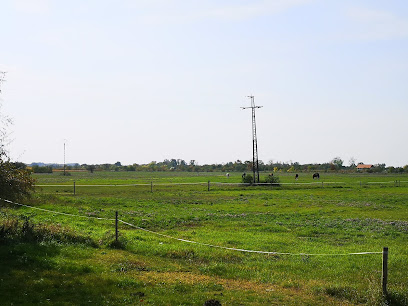
Hajdúság Landscape-protection Area
Explore the breathtaking landscapes and diverse wildlife of Hajdúság Landscape-protection Area, a true gem for nature lovers in Hungary.
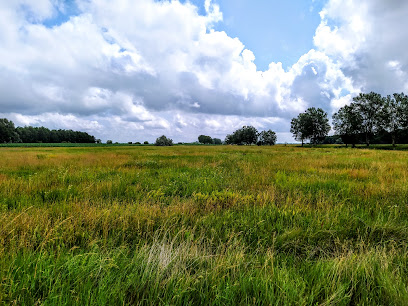
Hortobágyi Pásztormúzeum
Explore the Pásztormúzeum in Hortobágy: A captivating museum celebrating Hungary's pastoral heritage and the life of traditional shepherds.
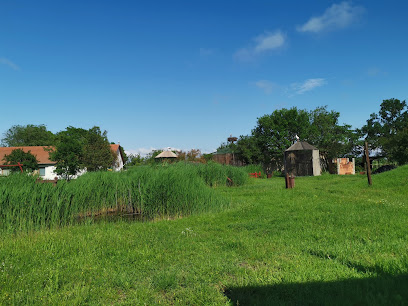
Szálkahalmi tanösvény Parkoló
Discover the enchanting Szálkahalmi Tanösvény, a nature trail blending Hungary's rich culture with breathtaking landscapes and diverse wildlife.
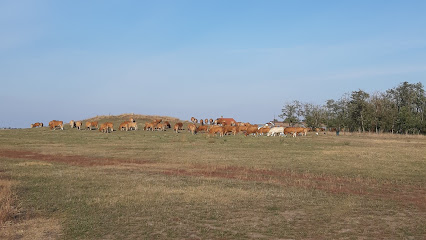
Behajtási Ünnep és Darufesztivál
Discover the enchanting Behajtási Ünnep and Darufesztivál in Hortobágy, where culture, tradition, and nature unite in a breathtaking celebration.

Markets, malls and hidden boutiques
Hortobágy Wild Animal Park
Discover the enchanting Hortobágy Wild Animal Park, a wildlife sanctuary featuring diverse species and educational experiences in a stunning natural setting.
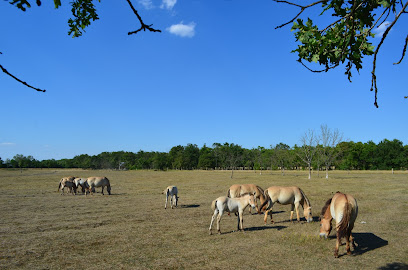
Hortobágy National Park Visitor Centre
Explore the stunning landscapes and unique wildlife at the Hortobágy National Park Visitor Centre, your gateway to Hungary's natural treasures.
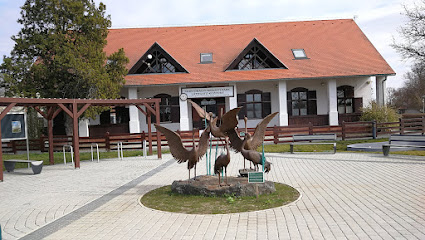
Local Phrases about Hortobagy National Park
-
- HelloSzia
[see-ah] - GoodbyeViszlát
[vee-slaht] - YesIgen
[ee-gen] - NoNem
[nem] - Please/You're welcomeKérem
[kay-rem] - Thank youKöszönöm
[koh-suh-noem] - Excuse me/SorryElnézést
[el-nay-zaysht] - How are you?Hogy vagy?
[hohdj vahdj] - Fine. And you?Jól vagyok. És te?
[yohl vahdjohk. aysh teh] - Do you speak English?Beszélsz angolul?
[be-sayl-s ang-oh-lool] - I don't understandNem értem
[nem ayr-tem]
- HelloSzia
-
- I'd like to see the menu, pleaseSzeretnék látni az étlapot, kérem
[seh-reht-nayk laht-nee oz ayt-la-pot, kay-rem] - I don't eat meatNem eszem húst
[nem es-em hoost] - Cheers!Egészségedre!
[ay-gays-sayg-ed-reh] - I would like to pay, pleaseFizetnék, kérem
[fee-zeht-nayk, kay-rem]
- I'd like to see the menu, pleaseSzeretnék látni az étlapot, kérem
-
- Help!Segítség!
[she-gheet-sayg] - Go away!Menj el!
[men yel] - Call the Police!Hívj rendőrt!
[hee-vey ren-durt] - Call a doctor!Hívj orvost!
[hee-vey or-vosht] - I'm lostElvesztem
[el-veh-stem] - I'm illBeteg vagyok
[be-teg vahdjohk]
- Help!Segítség!
-
- I'd like to buy...Vásárolni szeretnék...
[va-sha-rol-nee seh-reht-nayk] - I'm just lookingCsak nézelődöm
[chahk neh-zeh-loh-dohm] - How much is it?Mennyibe kerül?
[men-yee-beh ke-ryool] - That's too expensiveTúl drága
[tool draa-gah] - Can you lower the price?Le tudnád engedni az árat?
[leh too-dnaad eng-ed-nee oz aah-rraht]
- I'd like to buy...Vásárolni szeretnék...
-
- What time is it?Mennyi az idő?
[men-nyee oz ee-doo] - It's one o'clockEgy óra van
[edj oh-rah vahn] - Half past (10)Fél tizenegy
[feyl tee-zen-ay] - MorningReggel
[re-ggel] - AfternoonDélután
[dey-loo-tahn] - EveningEste
[esh-teh] - YesterdayTegnap
[teg-nahp] - TodayMa
[mah] - TomorrowHolnap
[hol-nahp] - 1Egy
[edj] - 2Kettő
[ket-toh] - 3Három
[ha-rom] - 4Négy
[neyj] - 5Öt
[oet] - 6Hat
[haht] - 7Hét
[hayt] - 8Nyolc
[nyolts] - 9Kilenc
[kil-ents] - 10Tíz
[teaze]
- What time is it?Mennyi az idő?
-
- Where's a/the...?Hol van a...
[hol vahn ah] - What's the address?Mi a cím?
[mee ah cheem] - Can you show me (on the map)?Megmutatnád (a térképen)?
[meg-moo-taht-naad ah tair-keh-pen] - When's the next (bus)?Mikor jön a következő (busz)?
[mee-kor yuhn ah kuh-veht-keh-zoh boos] - A ticket (to ....)Egy jegy (....-ra)
[edj yedj (rah)]
- Where's a/the...?Hol van a...
History of Hortobagy National Park
-
Hortobágy, the oldest and largest national park in Hungary, has a history that dates back to prehistoric times. Ancient artifacts discovered in the area indicate that it was inhabited by various nomadic tribes and ancient cultures, who lived off the land by hunting and gathering.
-
During the medieval period, Hortobágy became part of the Kingdom of Hungary. The vast plains were used primarily for grazing livestock, and shepherding became a central part of the local culture. The area was also crucial for trade routes due to its open landscapes.
-
In the 16th and 17th centuries, Hungary, including Hortobágy, fell under Ottoman rule. This period saw significant changes in the agricultural practices of the region. The Ottomans introduced new farming techniques and crops, some of which are still prevalent in the area today.
-
With the decline of the Ottoman Empire, Hortobágy became part of the Habsburg Monarchy, later the Austro-Hungarian Empire. This era brought about modernization, including the establishment of more structured agricultural practices and the introduction of railways, which facilitated the movement of goods and livestock.
-
Hortobágy National Park was officially established on January 1, 1973. It was the first national park in Hungary, founded to protect and preserve the unique landscape and biodiversity of the region. The park covers an area of 800 square kilometers and is a UNESCO World Heritage site.
-
The cultural heritage of Hortobágy is deeply intertwined with its natural landscape. The traditional lifestyle of the 'csikós' (Hungarian cowboys) and 'gulyás' (cattle herders) is still evident today. Events such as the annual Shepherd Festival celebrate this rich cultural history, showcasing traditional music, dance, and crafts.
-
In recent years, significant efforts have been made to conserve the natural environment of Hortobágy. Various projects aim to protect endangered species, restore traditional grazing practices, and maintain the delicate balance of this unique ecosystem. The park is also a major center for scientific research and environmental education.
Hortobagy National Park Essentials
-
Hortobagy National Park is located in eastern Hungary, approximately 180 kilometers from Budapest. The nearest international airport is Budapest Ferenc Liszt International Airport. From Budapest, you can take a train to Debrecen, which is the closest major city to the park. The journey takes about 2.5 hours. From Debrecen, you can reach Hortobagy by bus, which takes around 40 minutes. Alternatively, renting a car from Budapest or Debrecen offers flexibility and convenience for exploring the park.
-
Within Hortobagy National Park, the best way to explore is by car or bicycle. Car rentals are available in Debrecen and Budapest. Bicycles can be rented locally and are a great way to enjoy the scenic beauty of the park at a leisurely pace. Public buses also operate within the park, connecting major attractions. Guided tours are available and can provide deeper insights into the park's history and wildlife.
-
The official currency in Hungary is the Hungarian Forint (HUF). Credit cards are widely accepted in hotels, restaurants, and shops in and around Hortobagy National Park. However, it is advisable to carry some cash, especially for smaller establishments and rural areas. ATMs are available in Debrecen and other nearby towns. Ensure you have enough cash before entering the park if you plan to visit remote areas.
-
Hortobagy National Park is generally a safe destination for tourists. Standard precautions should be taken, such as keeping an eye on personal belongings and avoiding isolated areas at night. There are no specific high-crime areas targeting tourists within the park. However, always stay vigilant and aware of your surroundings, especially in crowded places.
-
In case of emergency, dial 112 for immediate assistance. Medical facilities are available in Debrecen, the nearest major city. It is recommended to have travel insurance that covers medical emergencies. For minor health issues, there are pharmacies in Debrecen where you can purchase over-the-counter medications. Local park rangers are also available to assist in emergencies within the park.
-
Fashion: Do wear comfortable clothing and sturdy footwear suitable for outdoor activities. Avoid wearing excessive jewelry or flashy clothing. Religion: Do respect local customs and traditions. While there are no specific religious sites within the park, it is always good to be respectful. Public Transport: Do be courteous and offer your seat to elderly passengers. Don't eat or drink on public transport. Greetings: Do greet people with a smile and a handshake. A friendly 'hello' (szia) is appreciated. Eating & Drinking: Do try local dishes and delicacies. Don't refuse food or drink offerings, as it is considered impolite.
-
To experience Hortobagy National Park like a local, visit the traditional markets where you can buy local produce and handmade goods. Engage with locals, who are often friendly and willing to share stories about the park's history and culture. Don't miss the Nine-Arch Bridge, a symbol of the park, and the annual Herdsmen's Festival, showcasing traditional Hungarian horsemanship and livestock farming. For a unique experience, take a guided bird-watching tour to see some of the park's diverse avian life.
Nearby Cities to Hortobagy National Park
-
Things To Do in Nyiregyhaza
-
Things To Do in Eger
-
Things To Do in Miskolc
-
Things To Do in Salgotarjan
-
Things To Do in Kecskemet
-
Things To Do in Košice
-
Things To Do in Satu Mare
-
Things To Do in Vac
-
Things To Do in Arad
-
Things To Do in Uzhhorod
-
Things To Do in Budapest
-
Things To Do in Szeged
-
Things To Do in Mukachevo
-
Things To Do in Prešov
-
Things To Do in Poprad








